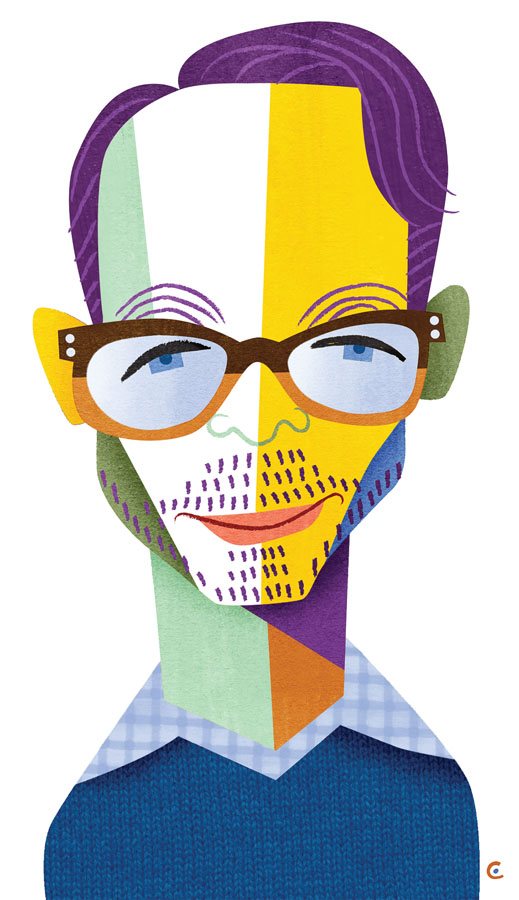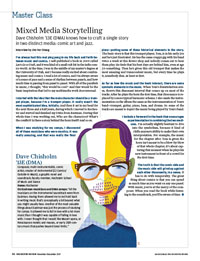Master Class
I’ve always had this real ping pong in my life back and forth between music and comics. I self-published a book in 2009 called Let’s Go to Utah, and it was kind of a small cult hit in the indie comics world. At the time, I was in the middle of my master’s degree at the University of Utah, and I became really excited about combining music and comics. I read a lot of comics, and I’m always aware of a sense of pace and a sense of rhythm between panels, and how much time is passing from panel to panel. With all of the parallels in music, I thought, “this would be cool.” And that would be the basic inspiration that led to my multimedia work Instrumental.
I started with the idea that the main character should be a trumpet player, because I’m a trumpet player. It really wasn’t the most sophisticated idea, initially. And then it sat in my head for the next three and a half years, during which I moved to Rochester and started and finished my DMA from Eastman. During that whole time I was working out, Who are the characters? What’s the conflict? Is there a story behind the horn itself? And so on.
 (Illustration: David Cowles for Rochester Review)
(Illustration: David Cowles for Rochester Review)Dave Chisholm ’13E (DMA)
Composer, multi-instrumentalist, comic artist; creator of Instrumental (Z2 Comics/Outside-In Music), a graphic novel and soundtrack; faculty member, Hochstein School of Music and Dance
Home: Rochester
On Eastman musicians and DMA comps: “All the musicians on the Instrumental soundtrack were from Eastman. Having them allowed me to not hold back in writing music that’s conceptually a bit beyond what you might usually hear. Another of the most valuable things about Eastman was just the process of studying for comps. It allowed me to fall in love with a lot more music than I thought I was capable of falling in love with. I never thought that I would like Mozart opera, or Renaissance motets and masses, or early 20th-century music that pushes beyond tonal limits.”
When I was studying for my comps, I discovered all of these musicians who were mystics. It was really amazing, and that was really the final piece—putting some of these historical elements in the story. The basic story is that this trumpet player, Tom, is in his early 20s and he’s just frustrated. He has the same crappy gig with his band twice a week at this flower shop and nobody comes out to hear them play. He feels that his best days are behind him, even at age 20-something. Then he’s given this old trumpet that makes the most amazing and transcendent music, but every time he plays it, somebody dies. At least at first.
As far as how the music and the book interact, there are some symbolic elements in the music. When Tom’s dissatisfaction arises, there’s this dissonant interval that comes up on most of the tracks. After he plays the horn the first time, that dissonance is replaced by a more typical harmonic scheme. I also made the instrumentation on the album the same as the instrumentation of Tom’s band—trumpet, guitar, piano, bass, and drums. So some of the tracks are meant to depict the music being played by Tom’s band.
I include a foreword in the book that encourages experimentation in combining the two mediums. I’m actually slightly hesitant to dive into the symbolism, because it kind of chills anyone’s ability to make their own interpretation. For example, the music for the chapter after Tom is given the horn isn’t meant to be a blow-by-blow of that whole chapter; it’s about capturing that moment when he plays his new instrument in front of a crowd for the first time.
The truth is that the comic side and the music side will grind up against each other dissonantly, in a sense. It has to do with temporality. The great thing about comics is that you can spend as much time as you want on any one panel. With music, you’re at the mercy of the composer. When you read the book while listening to the soundtrack, you’ll be aware of time.

